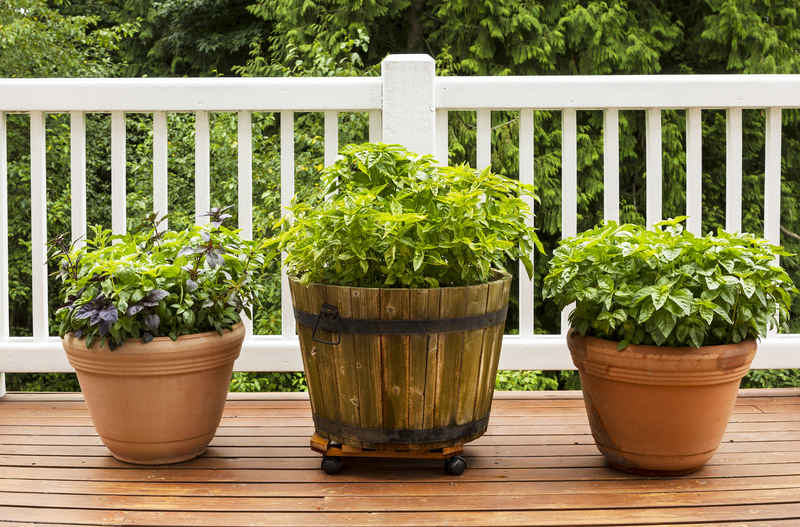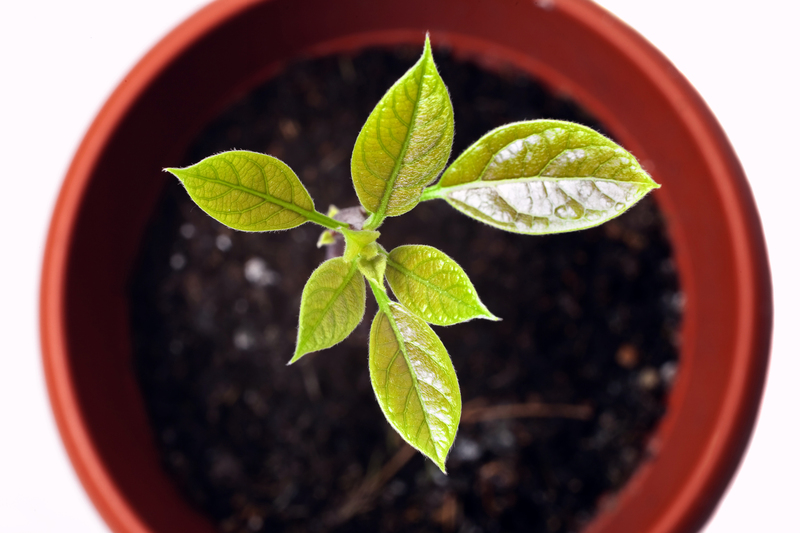Eco-Friendly Gardening Techniques to Fight Climate Change
Posted on 03/09/2025
Eco-Friendly Gardening Techniques to Fight Climate Change
Gardening is more than a pastime -- it's a powerful tool for individuals to take action against climate change. By adopting eco-friendly gardening practices, you can reduce your environmental footprint, support biodiversity, and help create a more sustainable future. This in-depth guide explores practical, evidence-based eco-conscious gardening methods that empower gardeners at any level to make a meaningful difference.

Understanding the Impact of Gardening on Climate Change
Gardens, when cultivated thoughtfully, offer numerous benefits for the environment. They sequester carbon, cool urban spaces, provide habitats for wildlife, and reduce the need for unhealthy, carbon-intensive food transportation. However, traditional gardening approaches can also contribute to emissions--via lawn care equipment, chemical fertilizers, and excessive water use.
Shifting to environmentally friendly gardening methods addresses these negatives, making gardens part of the solution to climate change instead of the problem.
Why Gardeners Should Care About Sustainability
- Biodiversity Boost: Eco-friendly gardens support pollinators and beneficial insects.
- Soil Health: Reducing pesticides and improving organic content increases soil carbon storage.
- Water Conservation: Sustainable landscaping decreases freshwater consumption.
- Carbon Footprint Reduction: Gardens can trap carbon in living plants and soil, offsetting emissions.
Top Eco-Friendly Gardening Techniques For Climate Action
1. Composting: Nourish the Earth, Reduce Waste
Composting is the process of breaking down organic matter--like kitchen scraps, fallen leaves, and garden trimmings--into rich soil. This practice prevents these materials from ending up in landfills, where they'd produce methane, a potent greenhouse gas. Instead, compost naturally stores carbon and enhances soil fertility.
- Start Small: Even a simple compost bin or pile can make an impact.
- Include: Fruit and vegetable scraps, coffee grounds, eggshells, grass clippings, and leaves.
- Exclude: Meat, dairy, diseased plants, and pet waste.
- Tip: Regularly turn your compost to aerate and speed decomposition.
2. Water-Wise Gardening: Save the Blue Gold
Water conservation is key in climate-friendly gardening. As droughts and extreme weather events become more common, implementing water-saving techniques reduces demand on municipal systems and keeps plants healthy.
- Choose Native and Drought-Tolerant Plants: They require less irrigation and adapt well to local climates.
- Mulch: Cover soil with organic mulch (wood chips, straw, leaf litter) to retain moisture and suppress weeds.
- Use Drip Irrigation: Deliver water directly to plant roots with minimal evaporation loss.
- Harvest Rainwater: Install rain barrels to collect runoff for garden use.
3. No-Dig and Low-Till Gardening: Protect Soil Carbon
Digging and tilling disrupt soil structure, releasing stored carbon into the atmosphere. No-dig (or no-till) gardening preserves soil health, encourages beneficial microbes, and prevents erosion.
- Lay Organic Mulch: Add compost or mulch on top of beds to fertilize and suppress weeds.
- Use Raised Beds: Minimize compaction and maintain soil integrity.
- Avoid Heavy Machinery: This reduces emissions and soil disturbance.
4. Grow Your Own Food: Cut Down Food Miles
Commercial food production and transportation contribute significantly to greenhouse gas emissions. By cultivating edibles in your eco-conscious garden, you reduce the carbon footprint associated with packaging, shipping, and storing food.
- Start a Vegetable Patch: Even a few homegrown herbs or tomatoes make a difference.
- Embrace Vertical Gardening: Use trellises and containers to maximize small spaces.
- Plant Perennials: Berries, rhubarb, or asparagus yield for years, requiring less energy each season.
5. Organic and Natural Pest Control: Safer for Planet & People
Chemical pesticides and fertilizers are energy-intensive to produce and can pollute soil and water. Instead, adopt natural pest control techniques that promote ecological balance.
- Attract Beneficial Insects: Plant flowers like calendula, alyssum, or dill for ladybugs and predatory wasps.
- Crop Rotation and Diversity: Reduce pest outbreaks by mixing plant types each season.
- Hand-Picking: Remove pests manually when feasible.
- DIY Sprays: Use diluted soap, neem oil, or garlic as eco-friendly treatments.
6. Design for Biodiversity: Bring Nature to Your Backyard
A truly sustainable garden is a biodiverse one. Native plants support local wildlife and pollinators, while varied plantings create resilient miniature ecosystems.
- Mix Plant Species: Avoid monocultures to build habitat and reduce disease.
- Include Pollinator Plants: Grow a range of flowering species all season for bees, butterflies, and birds.
- Add Water Features: Even small birdbaths or ponds aid amphibians and insects.
- Create Wildlife Corridors: Plant hedgerows or wildflower strips to connect habitats.
7. Reuse and Recycle in the Garden
Reduce your garden's resource consumption by creatively repurposing materials:
- Repurpose Containers: Use old buckets, pots, or boots as planters.
- Build with Salvaged Wood or Bricks: Construct beds, paths, or compost bins.
- Upcycle Plant Supports: Use pruned branches, bamboo, or metal for trellises and stakes.
- Re-use Water: Greywater from sinks (avoid chemicals!) can irrigate non-edibles.
Advanced Climate-Positive Gardening Approaches
8. Permaculture Principles: Working with Nature
Permaculture integrates eco-friendly gardening practices into a holistic system that mimics how nature works. Its core ideas are observation, energy conservation, and creating environments that care for humans and the planet equally.
- Zones: Place frequently used plants nearest your house for efficiency.
- Guilds: Plant "teams" of species that support each other (like the Three Sisters: corn, beans, and squash).
- Water Harvesting: Sculpt landscapes to direct rain into garden beds rather than storm drains.
9. Agroforestry in Urban Gardens
Agroforestry combines trees, shrubs, and food crops to create layered, climate-resilient gardens. Even small yards can benefit from adding fruit trees and nitrogen-fixing shrubs alongside annual beds.
- Plant Trees for Shade: Reduce water loss and cool your home naturally.
- Interplant Natives: Boost soil fertility and provide wildlife cover.
- Practice Companion Planting: Mimic natural forests with mixed species for health and yield.
10. Wildlife Gardening: Support Climate Adaptation
Encouraging biodiversity helps species adapt to a changing climate.
- Leave Some Mess: Piles of leaves, logs, or rocks offer crucial shelter.
- Install Insect Hotels: Provide homes for native pollinators.
- Limit Lights: Night lighting disrupts wildlife and wastes energy.
Common Questions About Sustainable Gardening for the Climate
Do Eco-Friendly Gardens Really Help With Climate Change?
Yes--eco-friendly gardening techniques actively remove carbon from the atmosphere, limit fossil fuel use, protect water resources, and provide food security. Collectively, millions of small gardens can have a massive impact!
Is Organic Gardening Always Good for the Environment?
Organic gardening avoids synthetic chemicals and promotes biodiversity, but it still requires careful management to maximize its positive impact -- especially water and fertilizer use.
How Do I Start a Climate-Friendly Garden?
- Assess your site (light, soil, water access).
- Choose native/adapted plants.
- Begin a compost pile or bin.
- Mulch and water wisely.
- Reduce or eliminate pesticides and synthetic fertilizers.
- Encourage diversity in plantings and wildlife.

Eco-Friendly Gardening: A Collective Climate Solution
Every gardener has the power to fight climate change from their own backyard or balcony. By integrating sustainable gardening techniques -- from composting and water conservation to biodiversity and permaculture -- each plot becomes a living defense against environmental harm.
In embracing these practices, you'll not only grow healthier plants, but also participate in a global effort to restore ecosystems, sequester carbon, and create a resilient community around you. Join the movement: start your climate-friendly garden today and watch both your plants and the planet thrive!
Final Tips for Climate-Smart Gardeners
- Learn Continuously: Attend workshops, read, and connect with local eco-gardeners.
- Share the Knowledge: Encourage neighbors and schools to adopt green gardening ideas.
- Monitor Your Impact: Track compost, food produced, or water saved, and celebrate progress.
With every seed, every shovel, and every supportive choice, you're cultivating hope. Let your garden be a model of eco-friendly resilience and a proactive answer to climate change.

